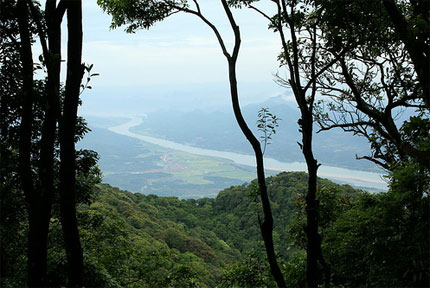Tailor Made Holidays with our travel experts
We'll do our best to call you within 48h

Formerly a French hill station, the triple-peaked Ba Vi Mountain (Nui Ba Vi) has been attracting visitors for decades and remains a popular weekend escape for Hanoians. The limestone mountain is now part of the Ba Vi National Park, which has several rare and endangered plants in its protected forest, as well as mammals, including two species of rare ‘flying’ squirrel and bountiful bird life.
There’s an orchid garden and a bird garden, and hiking opportunities through the forested slopes. A temple dedicated to Ho Chi Minh sits at the mountain’s summit (1276m) – it’s a difficult but beautiful 30-minute climb up 1229 steps through the trees. Fog often shrouds the peak, but despite the damp and mist it’s eerily atmospheric – visit between April and December for the best chance of clear views down to the Song Hong valley and Hanoi in the distance.
ravelling 50 km from the central city to the west of Ha Noi city, visitor will have chance to visit Ba Vi national park. The park is centreled on mount Ba Vi. The mountain rises steeply out of a plain that rarely exceeds 30 m in elevation. Generally, slopes on the western side of Ba Vi mountain, at an average of 25°, are steeper than those on the east. Above 400 m, the slopes on the western side may reach a gradient of 35° and rocky cliffs are present.
Mount Ba Vi has three peaks: the highest is Dinh Vua at 1,296 m, followed by Tan Vien at 1,226 m and Ngoc Hoa at 1,120 m. Because of the mountainous topography, the climate at Ba Vi varies with altitude. Above 500 m, fog enshrouds the top of the mountain on most days. Ba Vi has a large river only, it is Da river on the western side of the national park. Streams in the international park are small and fast flowing. In rainy season, the volume of water flowing through these small watercourses and over the surface of the ground is sometimes sufficient to cause landslides. In the dry season, however, many of the streams are dry.
The natural forest at Ba Vi is mainly distributed at elevation above 600m. Most of them are evergreen forest, lower montane evergreen forest and lower montane mixed coniferous and broadleaf forest. Ba Vi has 812 species of vascular plant, several species were described for the first time from the site, for example Ixora balansae, Litsea baviensis and Lasianthus langkokensis. Also according to the investment plan, Ba Vi supports 44 mammal species, 114 bird species, 15 reptile species and nine amphibian species.
Ba Vi national park brings a lot of advantages for people here. For instance, medicinal plant collection is a major economic activity in the area. It is also an important source of income for local people, especial Dao people. While French was here on colonial period, they used to make Ba Vi become a station, they also built about 200 villas. In addition, a road was built up the mountain to an elevation of 1,100 m. With the convenience of geographical location, favourable climate, and good infrastructure Ba Vi becomes more attractive to tourist. Ba Vi National Park is also an important site for education and scientific research. Further major tourism resorts are planned in and around the national park.